Are you dealing with the aftermath of an accident and feeling overwhelmed by the complexities of a third-party liability claim? You're not aloneânavigating through insurance negotiations and legal terminology can be a daunting task. But don't worry, we're here to help simplify the process for you. Join us as we explore essential tips and an easy-to-use letter template that will guide you through making your claim effectively.
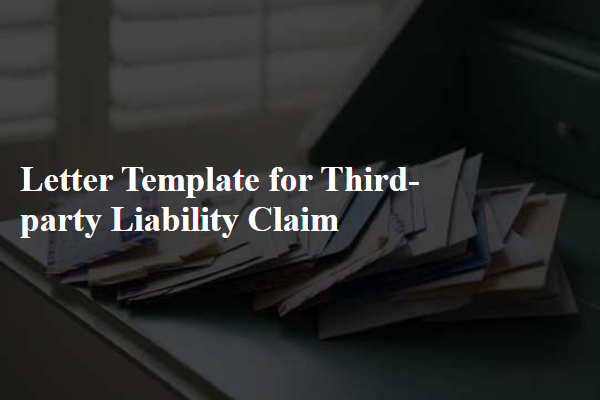
Claimant's identification details
The process of filing a third-party liability claim involves providing specific identification details of the claimant. Full name, including any middle initials if applicable, can help accurately identify the individual. Address details, encompassing street number, city, state, and postal code, ensure that all correspondence reaches the right place. Contact information should include a phone number, preferably a mobile number, and an email address for quicker communication. Date of birth is often necessary for verification purposes, while any reference or claim number related to the incident can streamline the processing of the claim. Finally, documentation such as a valid government-issued ID (e.g., passport or driver's license) can further substantiate the claimant's identity.
Incident description
A third-party liability claim typically arises from incidents involving accidents or injuries occurring on another person's property or due to another person's actions. For example, an incident at a public amusement park, such as Cedar Point in Sandusky, Ohio, where a visitor slips and falls on a wet surface that lacked proper signage, creates a liability scenario. This visitor may suffer injuries, requiring medical intervention, including potential emergency room visits and follow-up treatments. The absence of precautionary measures by the park management can illustrate negligence, supporting the claim. The visitor's medical expenses, lost wages from time off work, and any psychological distress experienced after the incident would constitute aspects of the claim against the responsible party.
Evidence documentation
Documenting evidence for third-party liability claims requires meticulous attention to detail, as proper records can significantly affect the outcome of legal proceedings. Collect comprehensive photographic evidence of the scene, including close-ups of damages (e.g., vehicle collisions, property destruction) and broader shots showing context (street signs, landmarks). Obtain police reports from incident sites, containing case numbers, officer statements, and witness accounts that validate the claim. Secure medical records detailing injuries sustained, treatment dates, and expenses incurred. Compile financial documentation such as invoices, receipts, and estimates for property repairs or medical costs, clearly itemizing all expenses related to the claim. Maintain communication logs with the involved parties, including names, dates, and summaries of discussions to evidence attempts at resolution. Lastly, ensure all documents are organized chronologically and labeled properly for easy referral during the claims process.
Liability assertion
A third-party liability claim involves an assertion that one party (such as an individual or company) is legally responsible for the injuries or damages suffered by another party. This scenario often arises in situations like automobile accidents, workplace incidents, or product defects causing harm. For instance, in a car accident on January 15, 2023, in downtown Los Angeles, a driver who ran a red light caused injury to a pedestrian. The injured party may pursue a liability claim against the driver, seeking compensation for medical expenses and lost wages. Key elements to establish include duty of care, breach of duty, causation, and damages, all of which must be supported by evidence such as police reports, witness statements, and medical records to strengthen the liability assertion.
Settlement request or demand
A third-party liability claim for damages typically stems from incidents involving property damage or personal injury. Claimants should provide clear, detailed accounts of the event leading to the liability claim, including dates, locations, and involved parties' information. For instance, a car accident on Main Street, August 15, 2023, between a sedan and a pickup truck, could serve as a reference point. Supporting documentation, such as photographs of damages, medical records detailing injuries, and repair estimates, enhances the legitimacy of the claim. Notable incidents, such as witnesses providing statements or police reports, can further solidify the case. A well-structured demand may outline compensation expectations, reflecting damages incurred, medical expenses, lost wages, or emotional distress, urging for a timely resolution of the matter.


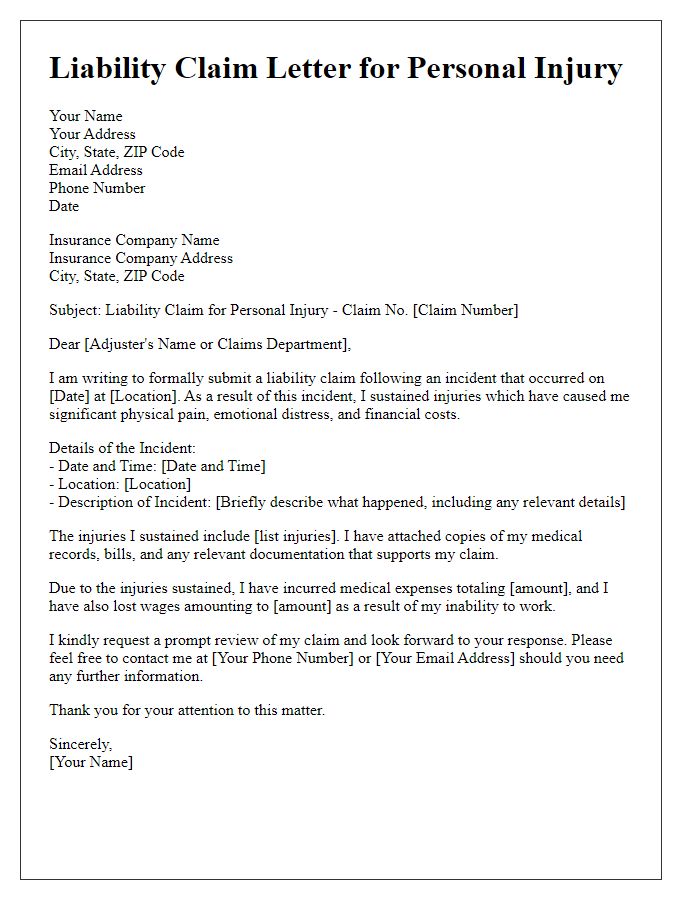
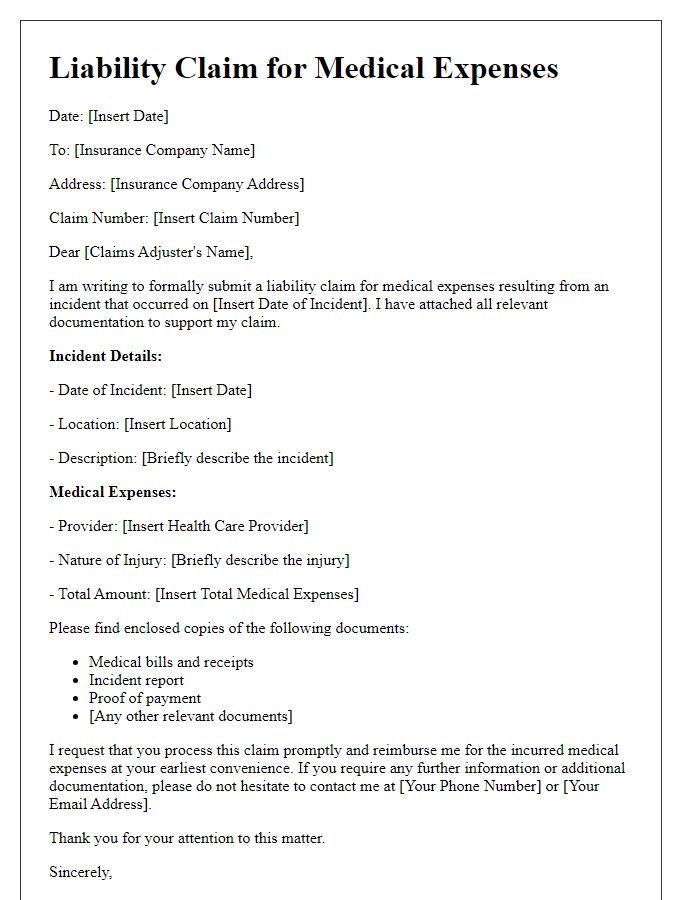
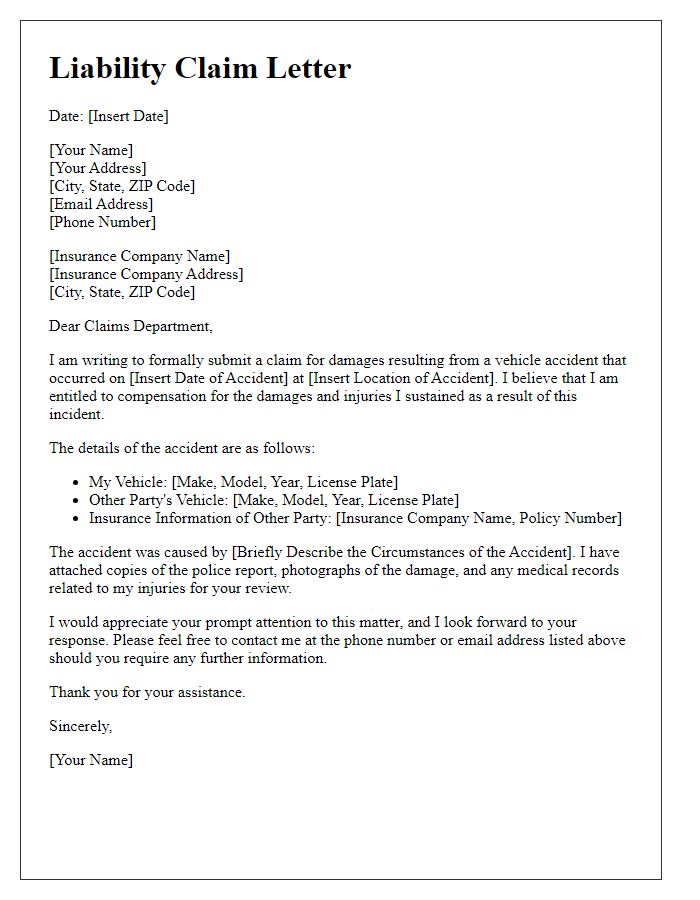
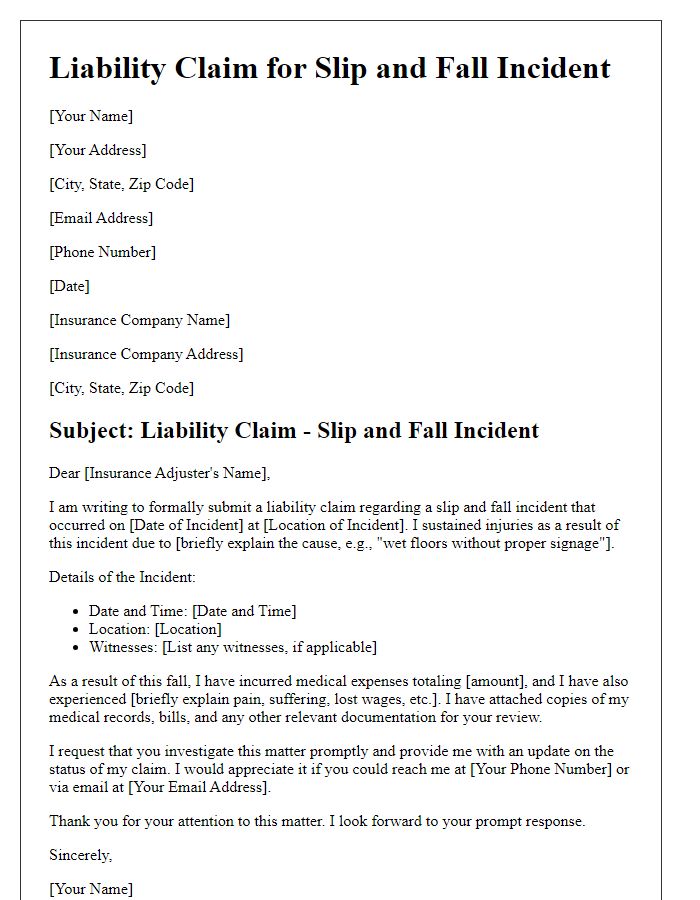
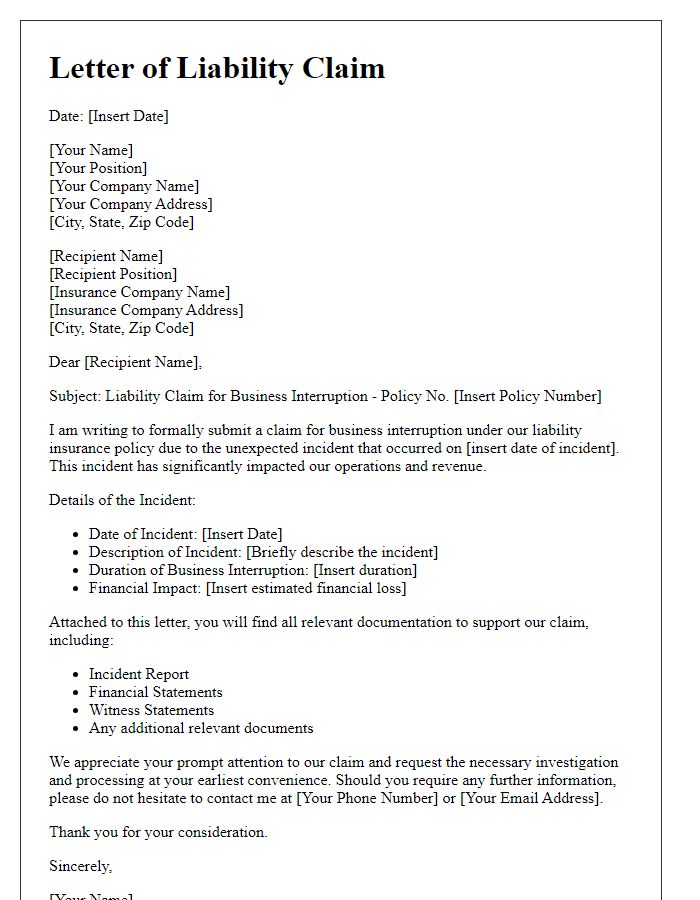
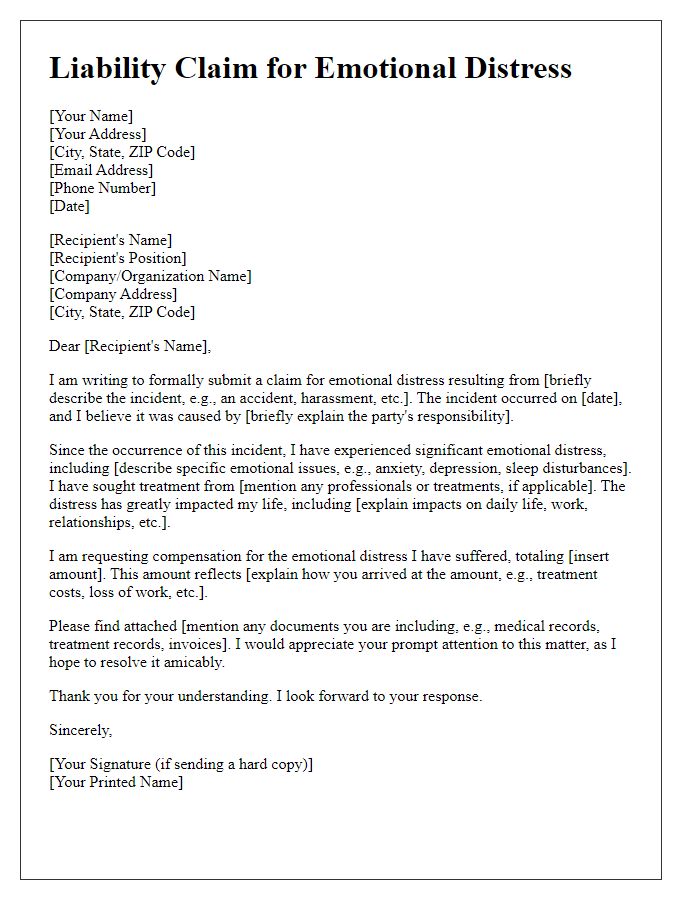
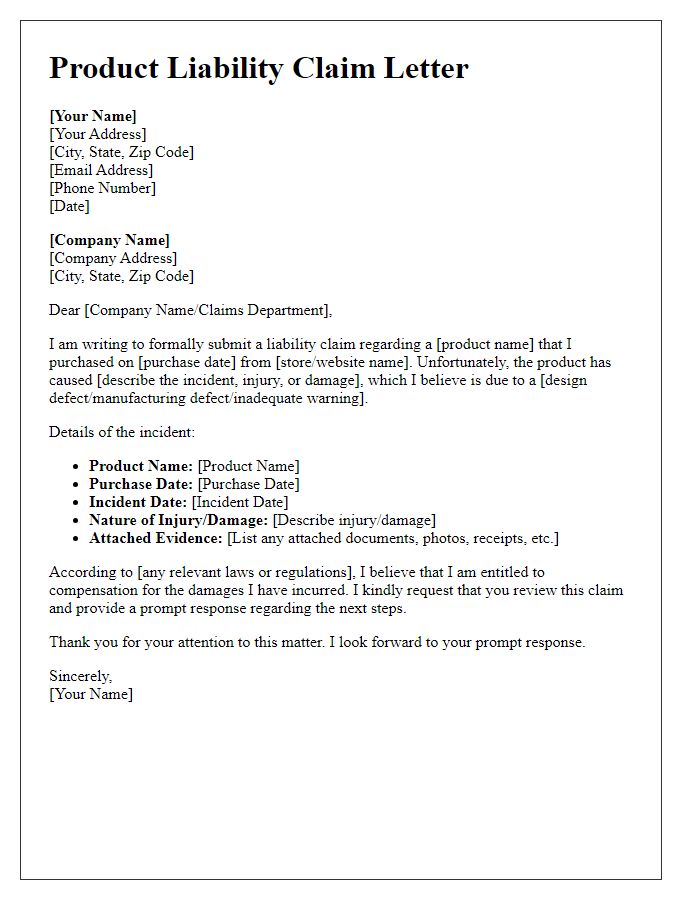
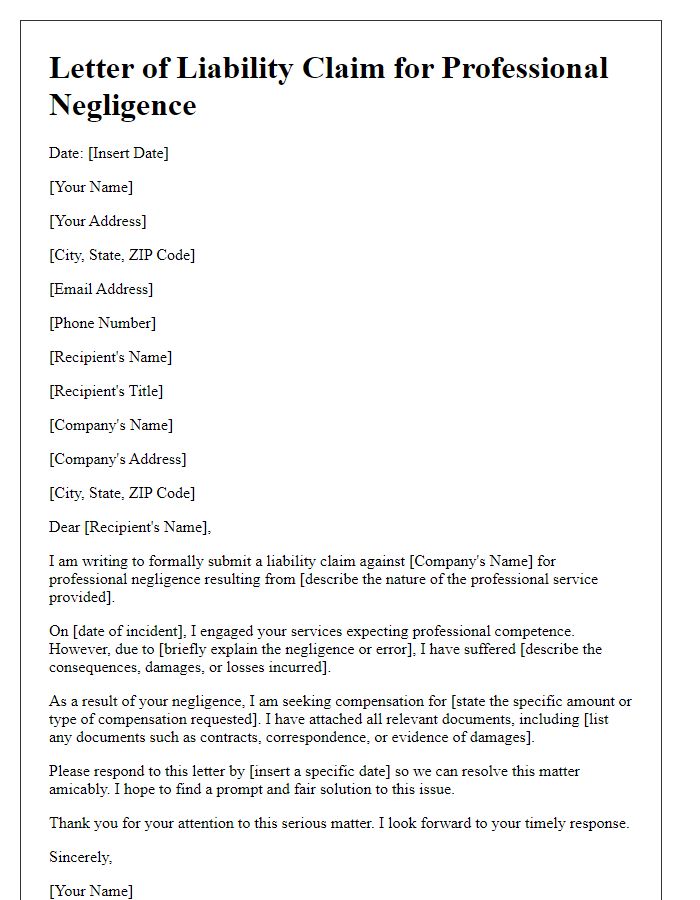
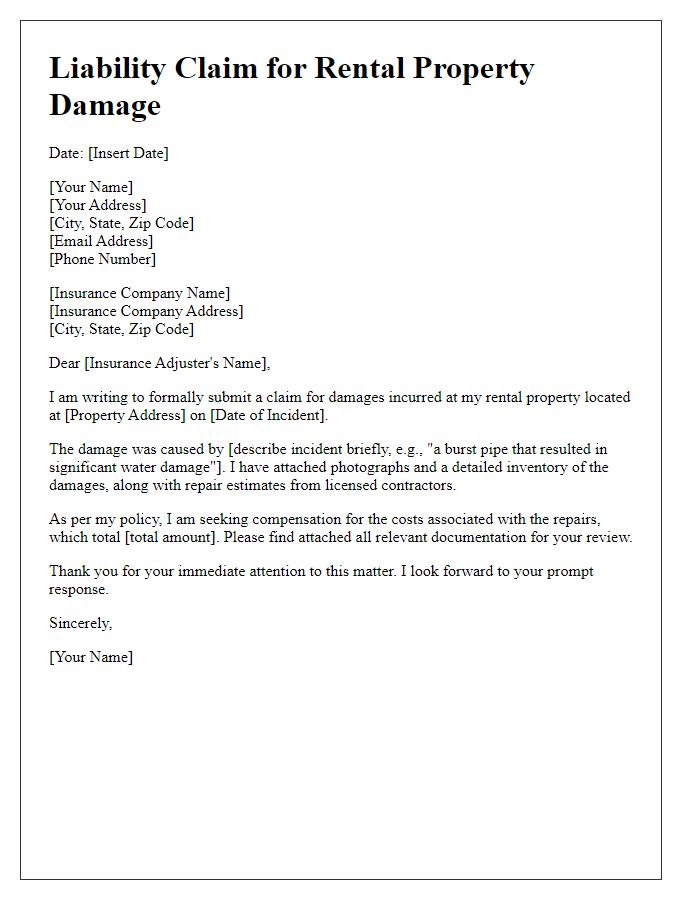


Comments